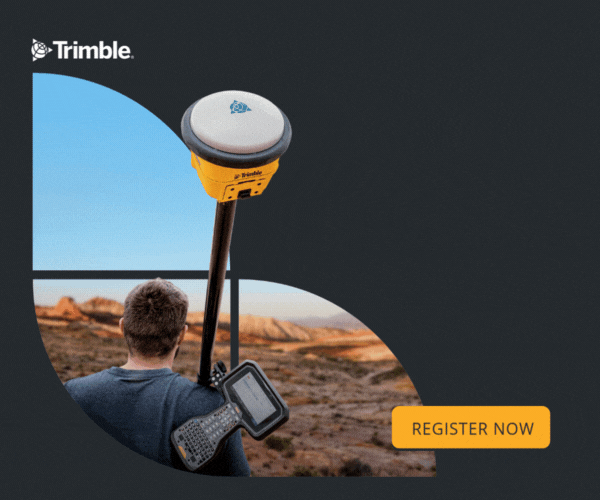A 6.031Mb PDF of this article as it appeared in the magazine—complete with images—is available by clicking HERE
The benefit of a low-cost, light-weight sensor like the Optech Maverick is its flexibility. The Maverick can profitably handle small projects while more expensive sensors usually stick to large-scale surveys. These smaller jobs are often particularly unique and interesting.
One of Maverick’s most interesting projects came from an organization that was interested in profiling tree structures with lidar. WholeTrees is a Wisconsin-based company that engineers cost-efficient, sustainable structural systems for commercial and residential buildings by using whole trees. Their goal was to evaluate and determine the potential use of low or no-value trees, which are culled from sustainably managed forests.
In this case, WholeTrees wanted to use lidar technology to scan trees in a local park for use in the construction of a grocery store in Madison, Wisconsin. The targets were urban ash trees that needed to be removed due to an Emerald Ash Borer infestation.
The Emerald Ash Borer is an exotic and destructive beetle from Asia that feeds on the spongy layer of tissue just beneath the bark of ash trees. They destroy the tree’s ability to move nutrients back and forth from the roots to the rest of the tree. Once infected by the Emerald Ash Borer, the living part of the tree starves and eventually dies.
The City of Madison Forestry Unit concluded that a certain number of ash trees in Tenney Park had been infected and needed to be removed to slow the spread of the Emerald Ash Borer. Instead of destroying the infected trees, WholeTrees provided a solution by suggesting that they be cut down while still structurally intact and used in the construction of a new building. Their plan was to use the entire tree rather than having it chopped, mulched or milled, thereby retaining the tree’s natural strength (50% stronger than a comparably sized milled timber).
Challenge
WholeTrees required highly accurate measurements of the trees to ensure they would fit into the construction blueprints of a new building. In the past, WholeTrees would cut down trees they were interested in integrating into a project, bring them to their warehouse, and then individually scan them. This was a complicated, inefficient, and time consuming method that sometimes led to a wasted effort. To make the process economically feasible, they needed a solution that would save time and resources without sacrificing accuracy.
Data Collection with Maverick
The proposed solution was to use the Maverick, a portable mobile mapping system that combines high-resolution 360 degree imaging, high-definition lidar, and an integrated position and orientation system to provide a robust and multi-functional dataset that WholeTrees could use to identify which trees would suit their purposes.
Once permission was granted by the City of Madison Parks Department, Maverick operators drove a RAV4 equipped with the Maverick through Tenney Park and collected data for each tree of interest. The collection was performed by driving on bike paths at low speeds throughout the designated harvest region of the park. Since it was a dense area, the collection was completed in less than one hour. Multiple passes were made to ensure a redundancy of data was collected for the best possible post-processed results.
Data Processing
The data from Maverick was run through the Distillery software package, thus preparing it for use within a variety of third party viewing, post-processing, or reduction software.
The team used STOUT, a specialized reduction software created by Floating Point FX, to identify and isolate the individual trees that would become the candidates for the WholeTrees process. The point clouds created for each tree of interest were then scrubbed by removing the leaves and small branches so they could be measured for their structural potential before being chosen for the project. STOUT exported polygon meshes of each tree for delivery. WholeTrees used their proprietary evaluation process that included software developed in-house to determine the structural integrity and engineering potential of each tree before bringing them to their factory for implementation.
Results
With the Maverick, the collection process was much more time efficient and cost effective. Eventually, WholeTrees hopes to create an inventory of trees that can be harvested as needed. According to WholeTrees co-founder, Roald Gundersen, "We’re developing an online catalogue of trees, from urban and rural forests, which can be pre-engineered, and made available to foresters for posting trees for sale, and building professionals as a new structural design medium."
Festival Foods was the first grocer to use round-timber columns, beams, and trusses as an engineered structural system. The 57,000 square foot structure used 30 to 40 tons of urban ash trees saved from the City of Madison. The entire project is one of the most unique applications we’ve seen so far, and shows that small jobs are an important niche for the Maverick.
Mitch Caya has been employed by Mandli Communications since 2004. Now the Sales and Marketing Manager, Mitch has helped oversee the overall growth of Mandli in the lidar market and has personally been involved in many statewide projects and Maverick projects like WholeTrees.
A 6.031Mb PDF of this article as it appeared in the magazine—complete with images—is available by clicking HERE
